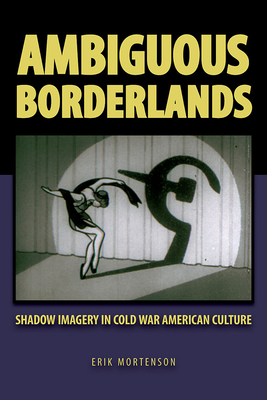
Ambiguous Borderlands: Shadow Imagery in Cold War American Culture
Description
The image of the shadow in mid-twentieth-century America appeared across a variety of genres and media including poetry, pulp fiction, photography, and film. Drawing on an extensive framework that ranges from Cold War cultural histories to theorizations of psychoanalysis and the Gothic, Erik Mortenson argues that shadow imagery in 1950s and 1960s American culture not only reflected the anxiety and ambiguity of the times but also offered an imaginative space for artists to challenge the binary rhetoric associated with the Cold War.
After contextualizing the postwar use of shadow imagery in the wake of the atomic bomb, Ambiguous Borderlands looks at shadows in print works, detailing the reemergence of the pulp fiction crime fighter the Shadow in the late-1950s writings of Sylvia Plath, Amiri Baraka, and Jack Kerouac. Using Freudian and Jungian conceptions of the unconscious, Mortenson then discusses Kerouac’s and Allen Ginsberg’s shared dream of a “shrouded stranger” and how it shaped their Beat aesthetic. Turning to the visual, Mortenson examines the dehumanizing effect of shadow imagery in the Cold War photography of Robert Frank, William Klein, and Ralph Eugene Meatyard. Mortenson concludes with an investigation of the use of chiaroscuro in 1950s film noir and the popular television series The Twilight Zone, further detailing how the complexities of Cold War society were mirrored across these media in the ubiquitous imagery of light and dark.
From comics to movies, Beats to bombs, Ambiguous Borderlands provides a novel understanding of the Cold War cultural context through its analysis of the image of the shadow in midcentury media. Its interdisciplinary approach, ambitious subject matter, and diverse theoretical framing make it essential reading for anyone interested in American literary and popular culture during the fifties and sixties.
Praise for Ambiguous Borderlands: Shadow Imagery in Cold War American Culture
“As this critically informed and impeccably readable narrative demonstrates, shadows were everywhere in Cold War America, their indeterminacy flickering through literature, film, photography, and television, haunting and unsettling the supposedly clear ideological binaries and battle lines of the era. From the literal shadows of human figures seared onto the walls of Hiroshima by the blast of the atom bomb in 1945 to the chiaroscuro lighting of film noir classics such as Kiss Me Deadly a decade later, Erik Mortenson illuminates the fascinating cultural history of one of the Cold War’s most seductive and significant rhetorical tropes.”—Oliver Harris, president of the European Beat Studies Network
"Ambiguous Borderlands offers a scholarly and yet utterly readable window on a heretofore under explored area of Beat studies. For those interested in Kerouac and Ginsberg, but for whom Beat studies seem stale and/or repetitive, this fresh perspective will prove thrilling. Do yourself a favor and explore the shadows of the Beat Generation."
—David S. Wills, editor of Beatdom
“Ambiguous Borderlands offers a scholarly and yet utterly readable window on a heretofore under explored area of Beat studies, and in chapters not covered above, goes well beyond the Beats. For those interested in Kerouac and Ginsberg, but for whom Beat studies seem stale and/or repetitive, this fresh perspective will prove thrilling. Do yourself a favour and explore the shadows of the Beat Generation.”—Beatdom.com
“The wide range of genres, media, and artists from which Mortenson draws will surely present a challenge for most readers, even those well versed in scholarship about US culture during the Cold War. Examining literal and figurative shadow imagery in sources from radio drama, poetry, fiction, photography, pulp magazines, film, and television, Mortenson demonstrates an impressive command of critical vocabularies related to an array of disciplines but does not drown readers in a sea of specialized terminology. Using a panoply of psychoanalytic and historical sources, he focuses on the various shadows that show up in popular and high culture from the late 1940s through the mid-1960s.”—CHOICE
